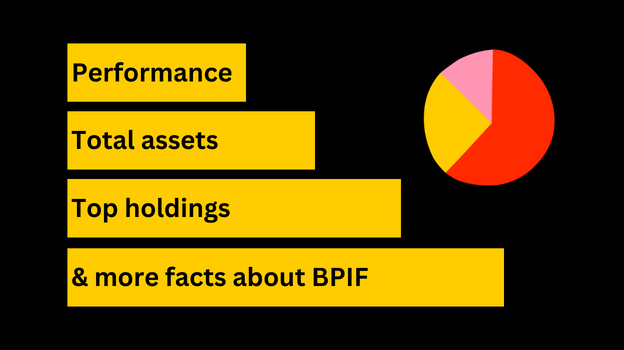Contact us about alternatives at BlackRock
Email: altshelp@blackrock.com
You're on the BlackRock site for advisors. Do you want to change your user type to advisor?

BPIF is designed for accredited investors to access a diverse, core portfolio of institutional-caliber private equity in a registered fund structure.
Learn about our private equity fund and how to introduce BPIF into your portfolios.
For illustrative purposes only. Past performance is not a guarantee or a reliable indicator of future results. Indexes are unmanaged, and one cannot invest directly in an index. Source: Burgiss. Private Equity represented by the Burgiss Private Equity Manager Universe for the period 9/30/2004 to 6/30/2024. Burgiss data reflects quarterly time weighted returns. Burgiss data is sourced from limited partners of these private funds and calculates results net of fees and carried interest, providing results that are updated and published on a quarterly basis. It is not possible to invest directly in an unmanaged index. Private market data often relies on self-reporting by managers. Therefore, there may be survivorship bias given that fund managers have discretion to report, or to discontinue reporting for various reasons (e.g. due to liquidation), and therefore private market data may reflect a bias towards funds with track records of success. This information is furnished to you with the express understanding that it does not constitute: (i) an offer, solicitation or recommendation to invest in a particular investment in any jurisdiction; (ii) a means by which any such investment may be offered or sold; or (iii) advice or an expression of BlackRock’s view as to whether a particular investment is appropriate for you and meets your financial objectives. Past performance does not guarantee or indicate future results.
The Burgiss Private Equity Manager Universe (BMU), Private equity represented by the Burgiss Private Equity Manager Universe (BMU) which contains 7,606private equity funds (vintages 1978-2023) as of June 2023 with 6/30/23 performance data (most recent performance data available). All vintages were included. All private equity sub-strategies in the BMU were included e.g., Equity Generalist, Equity Venture Capital Generalist, Equity Venture Capital Late Stage, Equity Expansion Capital, Equity Buyout, Equity Venture Capital Early Stage and Unknown as well as Equity Unknown. The BMU reflects quarterly time-weighted returns. The BMU is sourced from quarterly unaudited and annual audited financial statements that private investment fund managers produce for their fund investors. Therefore, there may be survivorship bias given that fund managers have discretion to report, or to discontinue reporting for various reasons (e.g. due to liquidation) and therefore may reflect a bias towards funds with track records of success. To protect the confidentiality of individual funds and their underlying portfolio investments, the published benchmark statistics reports contain only aggregate information. Therefore, the BMU is not transparent and cannot be independently verified given that it does not identify the funds included by name. Private investments in the BMU are typically illiquid. Additionally, any updates to historical data to this data universe, which can include adding a fund and its performance history to the database (“backfills”) and/or updating past information for an existing fund due to late-arriving, updated, or refined information, would be reflected when that group is published for the next performance. The Burgiss Private I Universe Analytics tool recalculates the data each time a new fund is added, therefore the historical performance of the data is not fixed, cannot be replicated, and will differ over time from the data presented in this communication.
Statistics of U.S. Businesses, The World Bank World Federation of Exchanges database as of December 2022. Represents the latest data available through 2019. Past performance is no guarantee of future performance
BlackRock Private Equity Partners (PEP) leverages BlackRock’s scale and our deep private equity underwriting expertise to maximize the opportunity set for investors.
The performance quoted represents past performance and does not guarantee future results. Investment return and principal value of an investment will fluctuate so that an investor’s shares, when sold or redeemed, may be worth more or less than the original cost. Current performance may be lower or higher than the performance quoted. Performance data current to the most recent month end may be obtained by visiting blackrock.com.
Past performance does not guarantee future results. There is no guarantee that the investments identified and selected were or will be profitable.
The Fund commenced operations 3/1/21. Performance is not shown for 1Q21 due to lack of a full quarter’s history. Total returns for the period 3/1/21-3/31/21 were -0.60% for Institutional shares. Performance for less than one year is not annualized. Performance since inception is annualized.
The Fund returns include reinvestment of dividends and capital gains. Fund performance data reflect total returns. Returns are unaudited and presented net of fees and expenses. Expenses stated as of the Fund’s most recent prospectus including Total/Net, Including Investment Related Expenses: Institutional Shares, 3.33%/2.45%. Reflects a 1.10% contractual waiver on the management fee in place until 12/31/25. Unless an extension of the contractual management fee waiver is approved by the Board, the Fund’s management fee will increase to 1.75% after 12/31/25. The Fund and BlackRock Advisor, LLC (the "Advisor") agree to waive and/or reimburse certain operating and other expenses of the Fund in order to limit certain expenses to 0.50% of the Fund’s average quarterly value of the net assets of each share class. Subject to the terms of the Expense Agreement, expenses borne by the Advisor in the prior two fiscal years of the Fund are subject to recoupment by the Advisor. Such recoupment arrangement will terminate on 12/31/27. The Fund will carry forward any waivers and/or reimbursements of fees and expenses in excess of the Expense Cap and repay the Advisor such amount provided the Fund is able to do so without exceeding the lesser of (1) the expense limit in effect at the time of the waiver or reimbursement, as applicable, or (2) the expense limit in effect at the time of recoupment after giving effect to the repayment. The Expense Agreement continues from year to year if approved by a majority of the Fund’s Independent Trustees. The current term of the Expense Agreement expires on 6/30/25. Includes acquired fund fees and expenses of the Portfolio Funds in which the Fund expects to invest. Some or all of the Portfolio Funds charge carried interest, incentive fees or allocations based on the Portfolio Funds’ performance. Acquired fund fees and expenses are based on historic returns of underlying Portfolio Funds in which the Fund expects to invest, which may change substantially over time. Institutional shares are not subject to a distribution fee or shareholder servicing fee.
Prior to January 2024 BPIF posted NAV quarterly and beginning in 2024 is now following a monthly NAV process. Performance reflected in USD. The Fund commenced operations 3/1/21. Performance since inception is annualized.
BlackRock Private Equity Partners (PEP) taps into the firm’s robust sourcing channels to access high quality opportunities across all market cycles. PEP has $55.0 billion AUM and a 25+ year track record of investing across direct investments and secondaries.8

As of 9/30/2025. Neither asset allocation nor diversification can guarantee profit or prevent loss.

| Investment³ | Type | Strategy | Geography | Position Size |
|---|---|---|---|---|
| Project Hubble | Direct | Buyout: Large | North America | 5.01% |
| Project Compass | Direct | Buyout: Large | North America | 4.33% |
| Project Pug | Direct | Buyout: Large | North America | 3.85% |
| Project Harp | Direct | Buyout: Large | Europe | 3.34% |
| Project Dalmatian | Direct | VC - Late/Growth | North America | 3.12% |
| Project Central | Direct | Buyout: Mega | North America | 2.95% |
| New Direct Investment | Direct | Buyout: Mega | Global | 2.22% |
| Project Athena | Direct | Buyout: Mega | North America | 2.18% |
| Project Platinum | Secondary | Non-traditional | North America | 2.06% |
| Project Yellowstone | Direct | Buyout: Medium | North America | 2.04% |
Source: BlackRock. Top holdings as of 9/30/25. The above Investments were selected to illustrate the top 10 holdings in the fund. The information above is not a prediction of future performance or any assurance that comparable investment opportunities will be available at the time of investment. It is non-representative of all underlying investments made by the Investment Team and it should not be assumed that Investment Team will invest in comparable investments, or that any future Investments made by Investment Team will be successful. To the extent that these investments prove to be profitable, it should not be assumed that the Investment Team’s other investments will be profitable or will be as profitable. Please note that the investment names shown may not be the name of the official investment vehicle(s) used to invest in the respective investments. Additional information about BPIF's holdings can be found by viewing BPIF's documents in the online archives of the SEC.gov website.
3.Reflects new private equity investments that have legally closed or were in process of closing at the most recent quarter as of 30 September 2025.
Email: altshelp@blackrock.com




